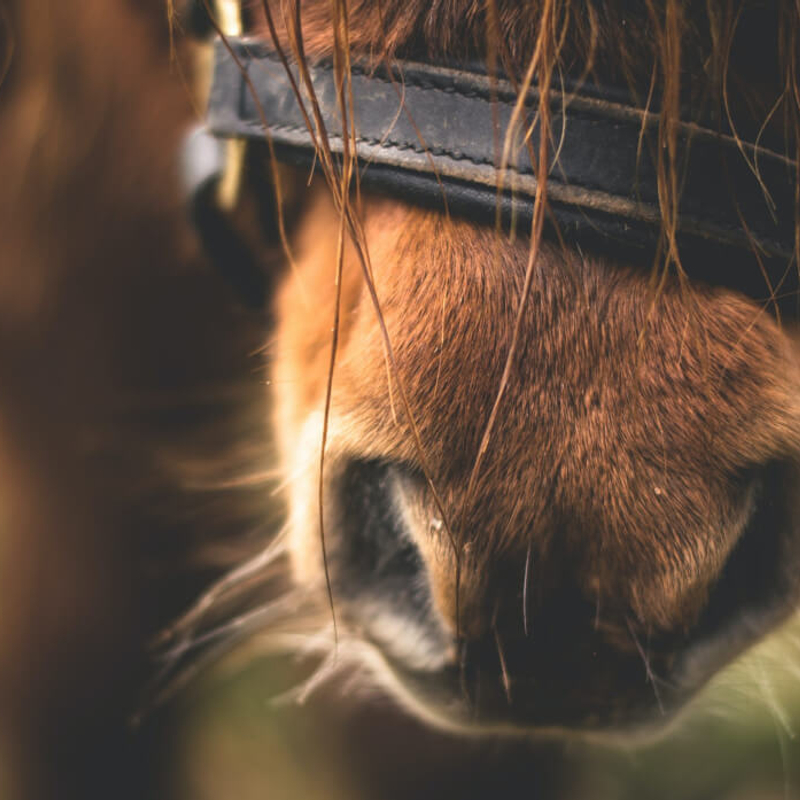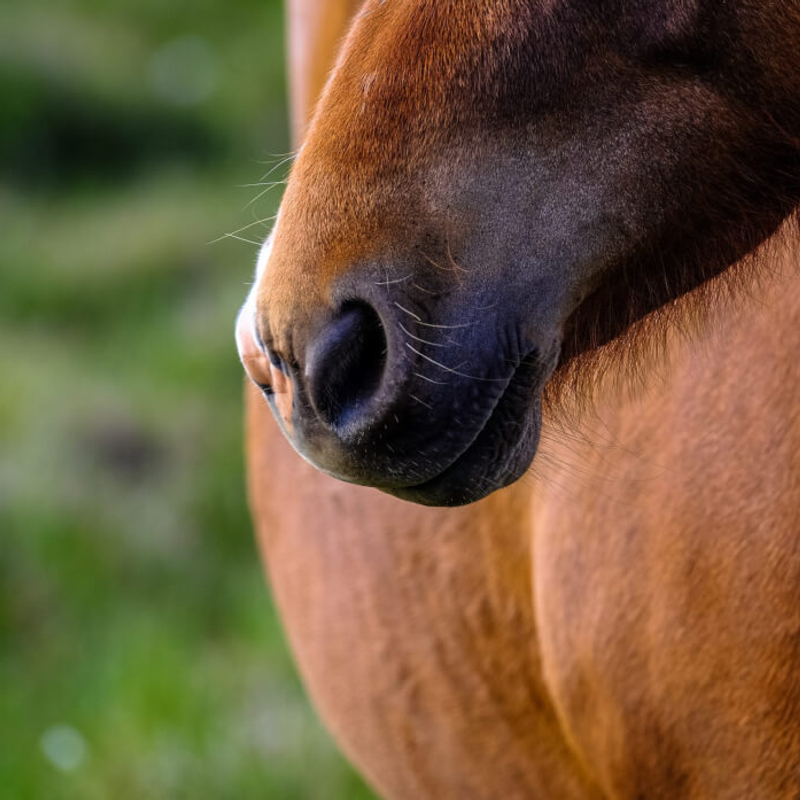Equine Asthma
The two inflammatory diseases of the lower respiratory tract “Recurrent Airway Obstruction” (RAO) and “Inflammatory Airway Disease” (IAD) have many similarities with human asthma. Therefore, the term equine asthma was recently introduced for these two diseases, in which the IAD represents the mild to moderate and the RAO the severe form of the disease.

What is the trigger?
Various influences, such as environmental factors, the attitude, the season and also preventive medical treatments contribute to the development of equine asthma. Horses that are kept in stalls with poor ventilation are exposed to high levels of dust particles, endotoxins, fungal spores, mold spores and harmful gases. Inhaling these allergens activates the immune system and causes inflammation of the lower airways. Since dry hay and straw can contain very large amounts of dust and mold spores, feeding them dry hay and straw is the greatest risk factor for the development or worsening of equine asthma. Another form of equine asthma is summer pasture associated obstructive pulmonary disease (SPAOPD), caused by allergens like pollen in spring and summer. The involvement of viral or bacterial infections in the development of equine asthma has not yet been clarified and there is still no scientific evidence of this.
Symptoms?
Equine asthma causes inflammation and narrowing of the lower airways with increased mucus production. This leads to a structural remodeling and obstruction of the airways, which in the advanced stage can lead to an irreversible loss of lung capacity. Horses with IAD often show only mild clinical symptoms such as decreased performance or occasional coughing. The horses usually do not show any difficult breathing at rest. In contrast, horses with an RAO are much more severely affected. They show difficult breathing at rest (abdominal pressure), often cough in the stable and under exertion and show a clear performance weakness. Horses with an RAO often have whitish to yellowish nasal discharge. Body temperature can be increased during an acute asthma attack.


Who is affected?
Lower respiratory tract diseases are the most common cause of underperformance in sport horses. Inflammatory diseases of the lower respiratory tract affect approximately 10-20% of all adult horses. The frequency and severity of the disease increase with age and housing.
Horses of all ages can get an IAD. However, younger horses are often affected. Whereas RAO only occurs in older horses (> 7 years).
The RAO develops over several years, which leads to an irreversible remodeling of the airways. In contrast, IAD can be completely reversible again. Not all horses that develop IAD inevitably get an RAO over time, but horses with an IAD are at increased risk of developing an RAO in the future
